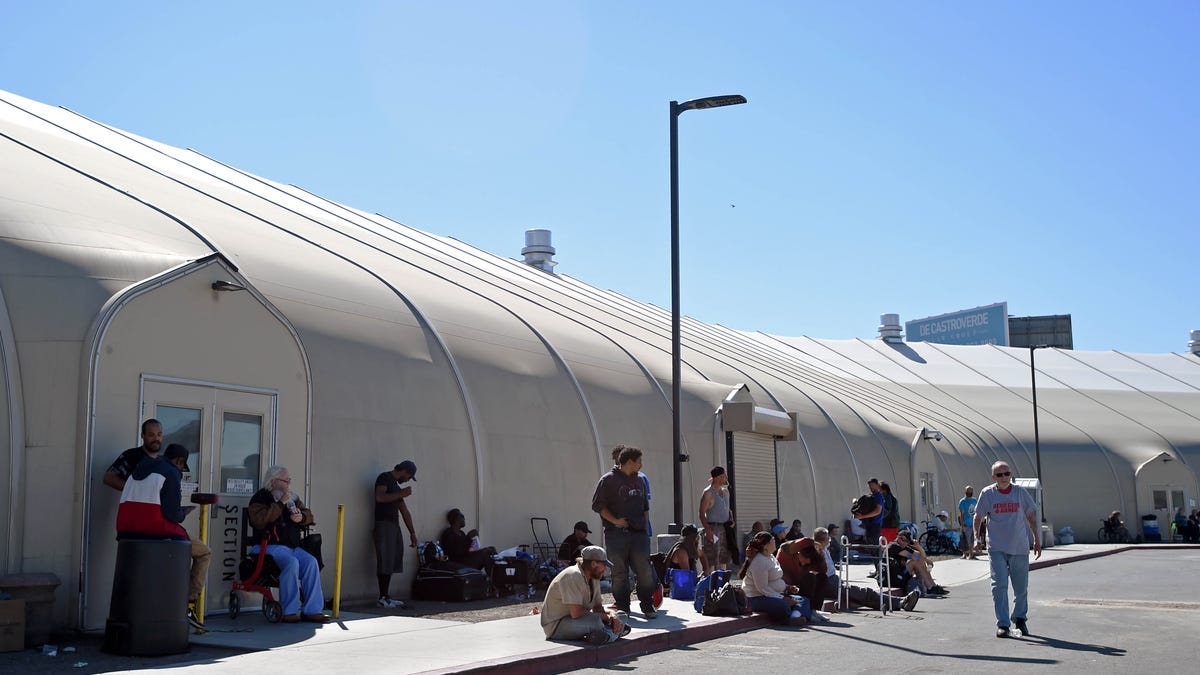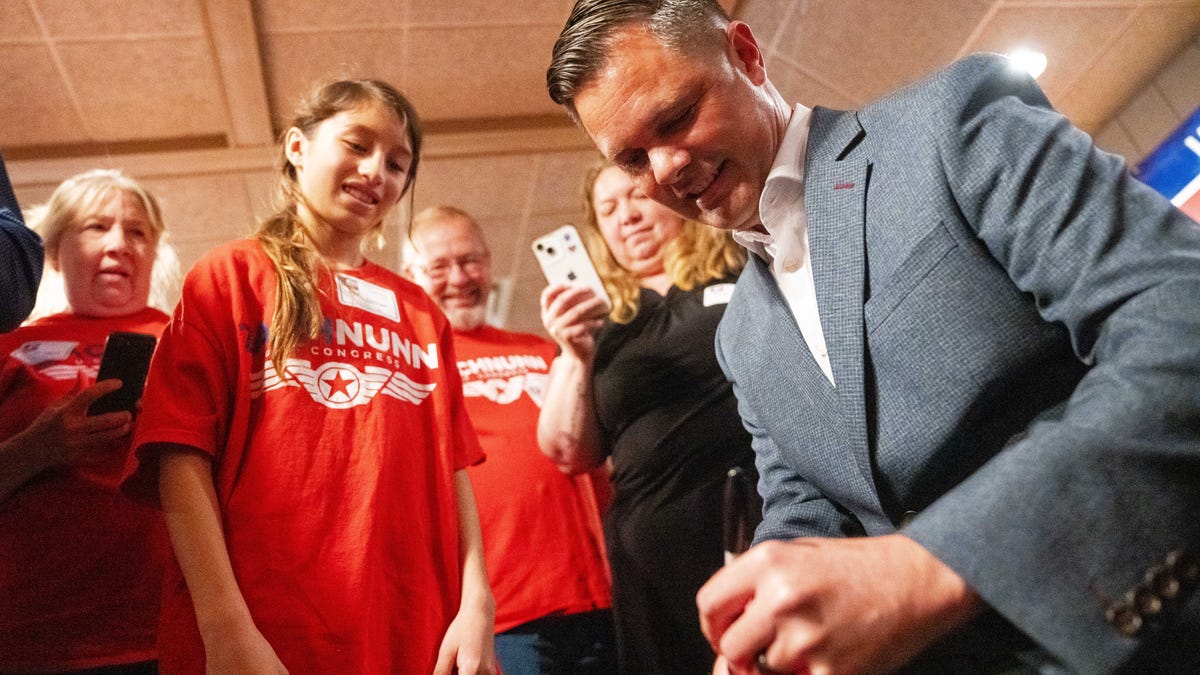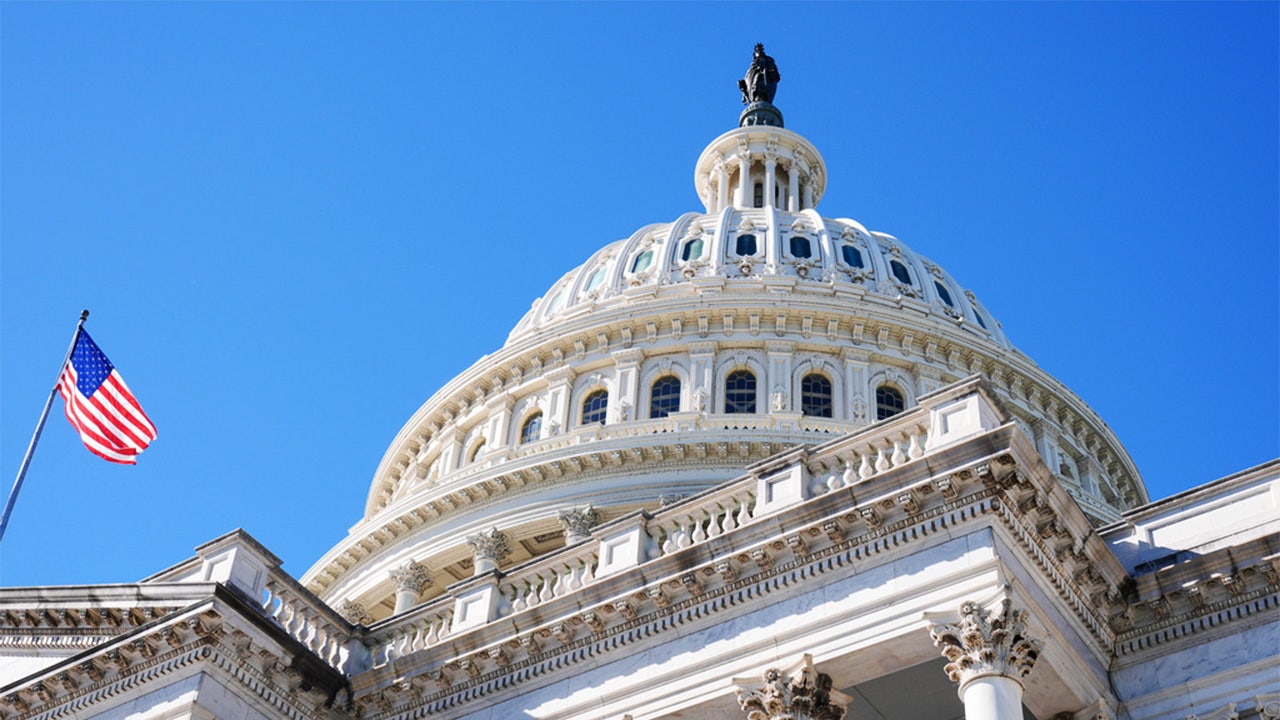Science
Helen Hays, Who Helped Bring Terns Back to Long Island Sound, Dies at 94

Helen Hays, an intrepid ornithologist who for nearly 50 years led scores of volunteers to Great Gull Island, a postage-stamp islet in Long Island Sound, where they endured dive-bombing birds and fierce ocean storms to help revitalize it as one of the world’s largest nesting sites for common and roseate terns, died on Feb. 5 in Scarsdale, N.Y. She was 94.
Her brother, James Hays, said the death, at a care facility, was from dementia.
Terns, both the common and roseate variety, are compact seabirds sometimes confused with gulls. They are also Olympic-level migrators: After nesting in secluded places like Great Gull Island, they travel as far as Argentina for the winter.
Ms. Hays was quite the migrator herself. Every spring she would leave her Manhattan apartment for Great Gull, a narrow, 17-acre slip of land that had been a U.S. Army fort until the end of World War II, when the military gave it to the American Museum of Natural History for $1. It lies just east of the tip of Long Island’s North Shore.
As chairwoman of the museum’s Great Gull Island Project, she would set up camp among the concrete bunkers left over from the fort, welcoming the first of several dozen volunteers, mostly high school and college students, who would arrive for stints on the island over the coming months.
There is no running water or reliable electricity on Great Gull Island; supplies arrive on a weekly mail boat. Should storms hit — and they often do — the researchers simply rode out the weather.
The birds themselves could be a hazard. Aside from their ubiquitous droppings — on the ground, on handrails, falling like rain from overhead — terns are terribly territorial, constantly pecking at the human interlopers. Ms. Hays took the occasional nip in stride; others wore straw hats with fake flowers stuck in the brims, to give the terns something other than a head to attack.
Ms. Hays ran the Great Gull Island Project with precision. Every morning at 6, she would rouse her volunteers over a loudspeaker, shouting things like: “No more napping. Time for trapping!”
They would work sunup to sundown, every day, sometimes braving the birds to collect samples or tag newborns, other times crouching for hours in one of the island’s 31 blinds, wooden structures designed to let them observe the birds up close.
Not surprisingly, most volunteers lasted just a few weeks. Ms. Hays, who began her annual trips in 1969, spent a full five months there, every single year, only stopping when Covid stopped everything in 2020.
Terns had long made Great Gull Island a temporary home. But after hatmakers and fashion mavens of the early 20th century killed them by the millions for their feathers nationwide, the common tern was considered a threatened species and the roseate tern endangered by the time Ms. Hays first began her work.
Thanks in large part to her diligence in making the island once again a welcome site for nesting, the number of mating pairs rebounded, going from about 3,000 in 1969 to more than 11,000 in the 2010s.
Ms. Hays’s work was not just for the good of the birds. Early on, her constant, close observation allowed her to track birth defects in tern chicks; further research led her to conclude that PCBs, a then-unsuspected class of chemicals, was the cause — making her among the first scientists to warn of their danger to animals and humans.
“She was tireless,” Joseph DiCostanzo, an ornithologist at the Museum of Natural History and a frequent volunteer on Great Gull, said in a phone interview. “I can remember being on the island and watching her run circles around students who were a third her age.”
Helen Hays was born on Jan. 22, 1931, in Johnstown, N.Y., an industrial town northwest of Albany. Johnstown specialized in leather goods, and her father, David, ran a glove factory; her mother, Helen (Stewart) Hays, wrote books about the region’s culture and history.
Helen found herself drawn to the idea of biological field work from an early age, and built her academic career around it. She studied biology at Wellesley College, and after graduating in 1953, she cast about for graduate programs that would get her directly into field work.
Soon she was in Manitoba, studying the ruddy duck at a field station run by Cornell University. She was working toward a master’s degree, but left before graduating.
Ms. Hays had been working in an office at the Museum of Natural History for a few years when she learned of discussions about what to do with Great Gull Island. When she heard that at least one museum donor was interested in supporting field research on terns, she jumped at the chance.
Ms. Hays never married and had no children. Her brother is her only immediate survivor.
Ms. Hays was herself a volunteer at the museum; though it gave her office space, she raised all her funding herself. Perhaps her greatest skill was persuading so many people to work for her without pay on a near-barren island in the middle of the summer.
Under her command, the Great Gull Island Project became a tight-knit community; marriages came out of relationships borne among the terns, and at least one parent who volunteered as a student later sent her own son to volunteer with Ms. Hays decades later.
“She inspired people,” said Joel L. Cracraft, an ornithologist at the museum. “Helen did it all.”

Science
Poultry industry pushes back after report shows salmonella is widespread in grocery store chicken

A new report based on government inspection documents shows salmonella is widespread in U.S. grocery store chicken and turkey products. But because of how the pathogen is classified, the federal government has no authority to do much about it.
Farm Forward, an organization that advocates for farmworker rights and humane farm practices, released a report this week that examined five years of monthly U.S. Department of Agriculture inspections at major U.S. poultry plants. It found that at many plants, including those that process and sell poultry under brand names such as Foster Farms, Costco and Perdue, levels of salmonella routinely exceeded maximum standards set by the federal government.
“The USDA is knowingly allowing millions of packages of chicken contaminated with salmonella to be sold in stores from major brands,” said Andrew deCoriolis, the organization’s executive director.
Some 1.3 million Americans are sickened each year by eating salmonella-contaminated food, according to the U.S. Centers for Disease Control and Prevention. Most people have only mild symptoms, but others suffer diarrhea, nausea and vomiting. Roughly 19,000 people are hospitalized annually, and an estimated 420 die from the infected food.
Chicken and turkey account for nearly a quarter of all salmonella infections, according to a 2021 government report on food illness.
The USDA’s Food Safety and Inspection Service inspects poultry plants monthly. The new report shows that five U.S. poultry plants exceeded maximum allowable salmonella contamination every month from 2020 to 2024. These included a Carthage, Mo., turkey plant owned by Butterball, a Dayton, Va., turkey plant owned by Cargill Meat Solutions, and a chicken plant located in Cunning, Ga., that is owned by Koch Foods. A Costco chicken producer, Lincoln Premium Poultry, exceeded the standard in 54 of 59 inspections.
“Lincoln Premium Poultry treats the safety of its products as an utmost concern,” Jessica Kolterman, the company’s director of administration, said in an email. “When the United State Department of Agriculture reports are updated and published, they will show that we have enhanced our standing. … We will continue to improve our processes.”
A spokesperson for Butterball said the company “takes food safety very seriously and follows all USDA and FSIS regulations and inspection protocols.” The spokesperson said facilities are subject to rigorous, continuous oversight, and they are “constantly reviewing and improving our food safety programs to ensure we meet or exceed government standards.”
Cargill, Perdue and Koch Foods did not reply to requests for comment. Foster Farms directed questions to the National Chicken Council, the industry’s trade group.
“Consumers should not be concerned,” said Tom Super, a spokesman for the chicken council. He said the report was “unscientific” and described Farm Forward as an “activist organization whose stated goal is to end commercial chicken farming.”
Both Super and Bill Mattos, president of the California Poultry Federation, said poultry is safe when cooked to 160 degrees, and knives, cutting boards and other items that may have come into contact with raw meat are disinfected and cleaned.
“All chicken is safe to eat when properly handled and cooked,” said Mattos, noting that annually “Californians eat more chicken than any other state … 110 pounds per person!”
The report also suggests that the federal government’s standards for acceptable levels of salmonella are unduly high, and potentially put American poultry consumers at risk.
For ground chicken, the USDA allows 25% of samples at a plant to be contaminated. For ground turkey, 13.5%. Chicken parts should not exceed 15.4% of samples contaminated, while the number is 9.8% for whole chickens.
“I don’t know, but seems common sense to me that if you allow for a lot of salmonella, a lot of people are going to get sick,” said Bill Marler, an attorney with Marler Clark, a national food safety law firm.
When inspectors visit a plant, they do not assess the meat’s bacterial load, nor do they determine the strain of bacteria found on the product. They just test for the presence of the bacterium — it’s either there or it’s not.
According to Marler and Maurice Pitesky, a poultry science expert at UC Davis, there are hundreds of strains — or serotypes — of Salmonella. Most are considered harmless, but roughly 30 are known to be potentially lethal to people.
As a result, the USDA inspections don’t give a clear picture about what’s there, Pitesky said.
“When I hear something has salmonella, I’m like, ‘OK, first question: I want to know its serotype. What kind of serotype is it?’ Because that that’s really the relevant piece of information,” he said.
When inspectors find a plant has exceeded the salmonella standard, there is very little they can do except note it. The agency has no authority to enforce the standards.
Marler said in the 1990s, after four children died and hundreds of people got sick eating ground beef contaminated with E. coli sold at Jack in the Box restaurants, the agency decided to classify the bacterium as an adulterant. That designation meant the USDA could stop the sale of contaminated products, or shut down a plant that failed inspections.
He said the beef industry initially pushed back, fearing it would lose money — which it did, at first.
He said the USDA started doing retail testing, “and for a while, it felt like there was a recall a week — you know … 50, 100, a thousand pounds here, a million pounds there, even 10 million pounds.” Eventually, however, companies started testing their products “and coming up with interventions to get rid of it. And you know what? The number of E. coli cases linked to hamburger plummeted.”
He said now he sees a case only once in a while.
“I kind of look at that and think, well, if you get salmonella out of chicken, you’ll probably reduce those cases too,” he said.
Pitesky said that salmonella is notoriously difficult to get rid of. It can be introduced to flocks from wild animals, such as birds, rats, mice and other wildlife. It’s also found in the intestines of chickens, on their skin, feathers and feet, and it spreads among them when they poop, urinate and walk around in shared bedding, etc.
However, Marler thinks it can be controlled.
“Yeah, it’s difficult,” he said. “But you can do a lot of things. And this might piss people off, but you could eradicate flocks with salmonella. They do it in the EU all the freaking time.”
The European Union considers salmonella an adulterant, and require producers to reduce and control it via biosecurity, testing, vaccinations, recalls and occasionally depopulation.
“The fact is, if you make salmonella contamination expensive, if recalls exist and people feel embarrassed that they’re producing food that is making people sick or killing them, they’ll want to change their behavior,” he said.
Science
How Zone Zero, designed to protect California homes from wildfire, became plagued with controversy and delays

Late last month, California fire officials made a courtesy call to Los Angeles.
The state’s proposed Zone Zero regulations that would force homeowners to create an ember-resistant zone around their houses — initially planned to take effect nearly three years ago — had caused an uproar in the region. It was time for damage control.
Officials from both Cal Fire and the state’s Board of Forestry and Fire Protection visited Brentwood, the epicenter of the outrage, and Altadena, where homeowners are trying to figure out how best to rebuild, but did little to assuage the concerns of the Zone Zero proposals’ most vocal critics.
The two groups took turns pointing out homes that seemed to support their claims. The copious, contradictory anecdotal evidence provided no consensus for a path forward. For example, in the Eaton burn area, officials showed residents a home they claimed was spared thanks to its removal of vegetation near the home, but residents noted a home across the street with plenty of plants that also survived.
It was an example of what’s become an interminable debate about what should be required of homeowners in L.A.’s fire-prone areas to limit the destruction of future conflagrations.
Initial attempts by the board to create Zone Zero regulations, as required by a 2020 law, quietly fizzled out after fire officials and experts struggled to agree on how to navigate a lack of authoritative evidence for what strategies actually help protect a home — and what was reasonable to ask of residents.
The Jan. 1, 2023, deadline to create the regulations came and went with little fanfare. A month after the January fires, however, Gov. Gavin Newsom signed an executive order resurrecting the efforts and ordering the board to finish the regulations by the end of the year. As the board attempted to restart and speed-run the previous efforts through a series of public meetings, many Californians grew alarmed. They felt the draft Zone Zero requirements — which would be the strictest statewide defensible space rules on the books — were a step too far.
“The science tells us it doesn’t make sense, but they’re ignoring it because they have to come up with something,” said Thelma Waxman, president of the Brentwood Homeowners Assn.,who is working to certify neighborhoods in her area as fire safe. “If I’m going to go to my members and say, ‘OK, you need to spend $5,000 doing one thing to protect your home,’ it’s not going to be to remove hydrated vegetation.”
Instead, she wishes the state would focus on home-hardening, which has much more compelling research to support its effectiveness.
Tony Andersen, the board’s executive officer, stressed that his team wants to keep requirements evidence-based and reasonable for homeowners. “We’re listening; we’re learning,” he said.
Zone Zero is one of the many fire safety regulations tied to the fire hazard severity maps created by Cal Fire, which, while imperfect, attempt to identify the areas in California likely to see intense wildfire.
Since 2008, all new homes in California in areas that those maps determined have very high fire hazard are required to have multi-paned or fire-resistant windows that are less likely to shatter in extreme heat, mesh coverings on all vents so flying embers can’t sneak inside and ignition-resistant roofing and siding.
The state’s defensible space regulations break down the areas surrounding a home into multiple zones. Zone Two is within 100 feet of the home; in that space, homeowners must remove dead vegetation, keep grass under 4 inches and ensure that there is at least 10 feet between trees. Zone One is within 30 feet of a structure; here, residents cannot store firewood. Zone Zero, within 5 feet, is supposed to be “ember-resistant” — essentially meaning that there cannot be anything that might ignite should embers land within it.
The problem is, it’s unclear how to best create an “ember-resistant” zone. For starters, there’s just not a lot of scientific evidence demonstrating which techniques effectively limit ignitions. That’s especially true for the most controversial Zone Zero proposal: removing healthy plants.
“We have very few publications looking at home losses and vegetation patterns in Zone Zero,” said Max Moritz, a wildfire-dynamics researcher with UC Santa Barbara and the UC Cooperative Extension program.
Further complicating the problem, the board also needs to consider what is reasonable to ask of homeowners. Critics of the current proposal point out that while wooden fences and outbuildings are banned, wooden decks and doors are still fine — not because they cannot burn, but because asking residents to replace them is too big of a financial burden and they are, arguably, out of the purview of “defensible space.” And while many in the L.A. area argue they should be allowed to keep plants if they’re well-watered, the board cannot single-handedly dictate water usage for ornamental vegetation across the state.
To deal with the head-spinning complexity, the state started with a small working group in 2021 that included Cal Fire staff, local fire departments and scientists. The working group slowly grew to include more local leaders and came close to finalizing the rules with the board as it neared the Legislature’s Jan. 1, 2023, deadline. But as the parties got stuck on the final details, the deadline came and went. Zone Zero slowly fell off the meeting schedules and agendas and for two years, essentially nothing was done.
Then, L.A. burned.
In February 2025, Newsom signed an executive order pushing the board to finish the regulations by Dec. 31. As the board began hosting public hearings on the regulations, shock and frustration had set in among Californians.
To add insult to injury, Newsom’s executive order also pushed Cal Fire to release new hazard maps that the Legislature had also mandated. When the agency did that in the spring, many Californians were distraught to learn that the maps added over 300,000 acres — mostly in developed areas — into the classifications where Zone Zero will apply.
At a (now somewhat infamous) Zone Zero meeting at the Pasadena Convention Center in September — the only one to take place in Southern California — public comments stretched on for over five hours. They included several speakers more accustomed to receiving public comments than making them: The mayor of Agoura Hills, representatives for L.A. City Council members and the chair of L.A.’s Community Forest Advisory Committee.
Alongside marathon public meetings, the board received more than 4,000 letters on the regulations.
In a September report to L.A.’s City Council, the Los Angeles Fire Department and the city’s forestry committee chastised the board for failing to consult the city during the process and only holding its Pasadena meeting “after persistent pressure from local advocates … six months into the rulemaking process.” It also pointed to a 2025 study that found many home-hardening techniques play a much more significant role in protecting homes than defensible space.
Most of the Zone Zero proposals have generally received agreement or at least acceptance among the public: No wooden mulch, no wooden fence that attaches to the house, no dead vegetation and only outbuildings made of noncombustible materials. But two issues quickly took center stage in the discourse: trees and plants.
Residents have become increasingly concerned with the prospect of cutting down their trees after the working group began discussing how to handle them. However, the current proposals would not require residents to remove trees.
“It’s pretty much settled,” Andersen said. Well-maintained trees will be allowed in Zone Zero; however, what a well-maintained tree looks like “still needs to be discussed.”
What to do about vegetation like shrubs, plants and grasses within the first 5 feet of homes has proved more vexing.
Some fire officials and experts argue residents should remove all vegetation in the zone, citing examples of homes burning after plants ignited. Others say the board should continue to allow well-watered vegetation in Zone Zero, pointing to counterexamples where plants seemed to block embers from reaching a home or the water stored within them seemed to reduce the intensity of a burn.
“A hydrated plant is absorbing radiant heat up until the point of ignition, and then it’s part of the progression of the fire,” said Moritz. The question is, throughout a wildly complex range of fire scenarios, when exactly is that point reached?
In October, the advisory committee crafting the regulations took a step back from its proposal to require the removal of all living vegetation in Zone Zero and signaled it would consider allowing well-maintained plants.
As the committee remains stuck in the weeds, it’s looking more and more likely that the board will miss its deadline (for the second time).
“It’s more important that we get this right rather than have a hard timeline,” Andersen said.
Science
Wave of RSV, particularly dangerous for babies, sweeping across U.S.; doctors urge vaccination
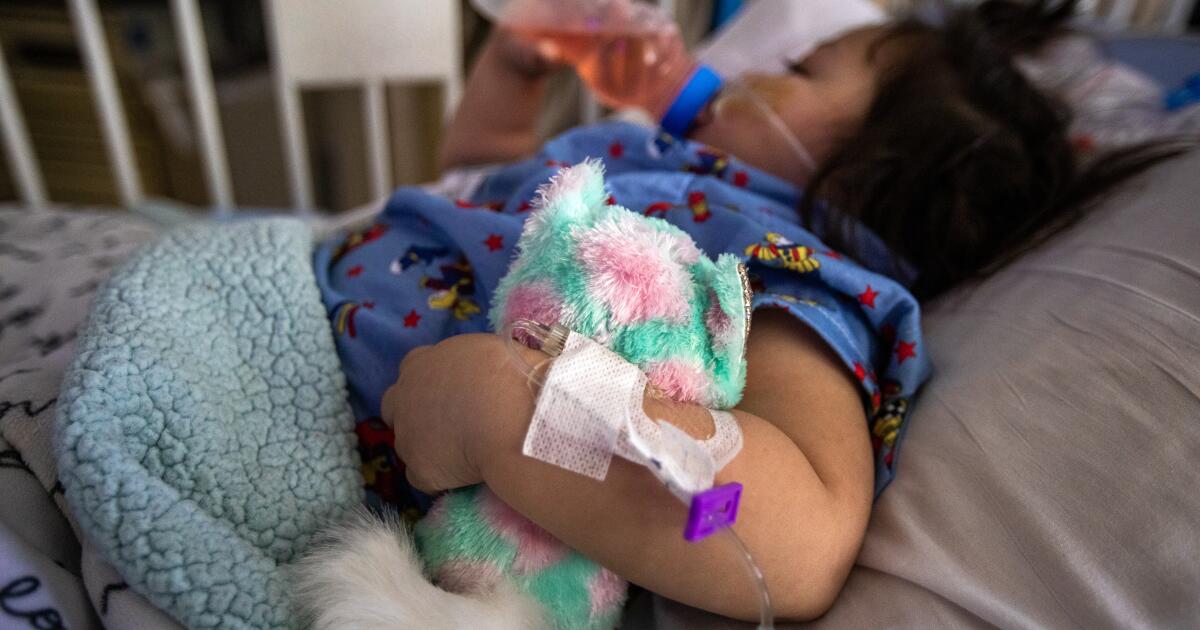
A wave of the highly contagious respiratory syncytial virus is sweeping across the United States — sending greater numbers of babies and toddlers to the hospital, recent data show.
The onset of RSV comes as the country heads into the wider fall-and-winter respiratory virus season, also typically marked by increased circulation of ailments such as COVID-19 and the flu. But RSV, the leading cause of infant hospitalization nationwide, presents particular risk for the youngest babies, a major reason health experts recommend pregnant women either get vaccinated near their delivery date or immunize their newborns.
“This is the perfect time to get your vaccine for RSV if you have never gotten one,” the Los Angeles County Department of Public Health said in a statement to The Times.
RSV can spread through coughs or sneezes but also by touching a contaminated surface, such as a door handle, and then touching your face before washing your hands, health officials warn.
For the week ending Oct. 11, about 1.2% of emergency room visits nationwide among infants younger than 1 were due to RSV — up from 0.4% a month earlier, according to data posted by PopHIVE, a project led by the Yale School of Public Health.
“An RSV wave is starting to take hold,” epidemiologists Katelyn Jetelina and Hannah Totte wrote in the blog Your Local Epidemiologist.
RSV can be dangerous for infants, older adults and people with certain medical conditions, according to the U.S. Centers for Disease Control and Prevention. RSV can cause pneumonia, as well as a severe inflammation of the lungs’ small airways, known as bronchiolitis, the California Department of Public Health said.
“The issue with kids is that their airways are so small that when it causes inflammation in the airways, it’s just very hard to breathe,” said Dr. Peter Chin-Hong, a UC San Francisco infectious diseases expert. “So they come in with wheezing … and that’s why they get into trouble.”
Nationally, RSV kills up to 300 children under age 5 annually, and can send up to 80,000 to the hospital. Among seniors age 65 and older, the virus can cause up to 10,000 deaths in a typical year and as many as 160,000 hospitalizations, according to the CDC.
“I think it’s been kind of invisible, mainly because until recently … people wouldn’t test — we couldn’t test for RSV until the age of molecular diagnostics,” Chin-Hong said. “So it has been kind of an invisible epidemic.”
RSV is “kind of a bronze medalist of respiratory viruses, with COVID and influenza No. 1 and No. 2, duking it out, and RSV is No. 3 for older adults,” he added. In general, RSV is the first to emerge during the fall-and-winter virus season, followed by flu then COVID, Chin-Hong said.
Before immunizations became available, about 2% to 3% of young infants were hospitalized for RSV annually, according to the CDC. Most children who are hospitalized for acute respiratory disease caused by RSV were previously healthy, according to a study published by the journal Pediatrics.
They may require oxygen or intravenous fluid or even be put on a ventilator to help them breathe, according to the CDC.
Unlike the flu and COVID-19, there are no antiviral drugs to treat RSV once infection sets in.
For now, the combined activity of respiratory illness from RSV, flu and COVID-19 is considered “very low” in California, state health officials said.
But “we are starting to see the beginnings of respiratory virus season,” the L.A. County Department of Public Health said.
Health officials in Santa Clara County, Northern California’s most populous, are already reporting “medium” levels of RSV in the wastewater of San José, Palo Alto and Sunnyvale.
Now is exactly the time to get vaccinated if you haven’t already — “especially before respiratory virus activity potentially increases later,” said Dr. Regina Chinsio-Kwong, the Orange County health officer.
RSV immunizations are recommended for pregnant women between 32 and 36 weeks of gestational age — about one to two months before their estimated delivery date — as well as for everyone age 75 and up and those age 50 to 74 with underlying medical conditions such as diabetes, cancer, kidney disease, weakened immune systems, asthma or heart disease. Vaccines are also recommended for individuals who live in a nursing home or long-term-care facility.
If a pregnant woman wasn’t vaccinated against RSV, officials recommend her infant get immunized.
RSV vaccinations are fairly new, being introduced in 2023. There are now three brands — Pfizer’s Abrysvo and GSK’s Arexvy were licensed in May 2023, and Moderna’s mResvia in June 2024. All three can be used for older adults, but only the Pfizer vaccine is available for pregnant women.
Infants were also able to get immunized starting that year through monoclonal antibodies, which aren’t technically vaccines but function similarly in this case.
Older adults who already received an RSV vaccination generally don’t need to get another one.
The arrival of those vaccines followed a particularly brutal 2022-23 respiratory virus season when California was slammed by a hospital-straining “tripledemic” of RSV, flu and COVID.
Unlike the RSV shots, flu and COVID vaccinations are generally recommended ahead of every fall-and-winter virus respiratory season. Older adults, those age 65 and up, can get the COVID vaccination every six months, according to the California Department of Public Health.
People can get the RSV, flu and COVID vaccinations all during the same visit to a healthcare provider, Chinsio-Kwong said.
“Receiving all eligible vaccines at once is considered best practice, as it helps avoid missed opportunities due to scheduling challenges,” she said.
Studies have shown the RSV immunizations are effective.
During last year’s respiratory virus season, there were significant reductions in the RSV hospitalization rate for babies, data show. Data also show RSV vaccines were effective in preventing symptomatic illness in older adults.
Chin-Hong said he suggests “everyone should get it” if they are 75 or older, and for those between age 50 and 74 with heart or lung disease or are very immune compromised, “I think the juice is worth the squeeze.”
Annual routine flu vaccines are recommended for everyone who is at least 6 months old.
As for COVID, a vaccine can be given to anyone who wants one. The California Department of Public Health specifically recommends the shots for everyone age 65 and up, babies age 6 months to 23 months, children and teenagers who have never been vaccinated, and people with certain health risk factors and those in close contact with them.
The California Department of Public Health also recommends pregnant women get the COVID vaccination.
After concerns earlier this season about how difficult it might be to get COVID vaccinations, pharmacists and California health officials now say securing the shots is relatively easy.
The controversy arose in the late summer amid confusing guidance coming from agencies overseen by Health and Human Services Secretary Robert F. Kennedy Jr., who has disparaged vaccinations.
There was a period during which the Food and Drug Administration had belatedly approved COVID-19 vaccines only for those age 65 and up and younger people with underlying health conditions. An unprecedented delay in the CDC issuing its own recommendations had the effect of snarling vaccinations for many.
In some states, that meant people were being turned away from getting the COVID vaccine at their local pharmacy, including seniors, even as a late summer surge was raging. And at one point, the powerful CDC Advisory Committee on Immunization Practices nearly recommended the COVID vaccine be available by prescription only.
On Oct. 6, acting CDC Director Jim O’Neill officially lifted the agency’s recommendation that adults under age 65 get the updated COVID-19 vaccine, saying instead that doing so should be based on “individual-based decision-making” in consultation with health professionals.
Now, “patients can go into the pharmacy” and can have conversations on whether to get the COVID-19 vaccine with a professional, Allison Hill, a director of professional affairs for the American Pharmacists Assn., said during a recent webinar.
California also recently clarified state law to make sure that pharmacists can independently administer the COVID vaccine, according to Dr. Erica Pan, director of the state Department of Public Health.
-

 Milwaukee, WI1 week ago
Milwaukee, WI1 week agoLongtime anchor Shannon Sims is leaving Milwaukee’s WTMJ-TV (Channel 4)
-

 News1 week ago
News1 week agoWith food stamps set to dry up Nov. 1, SNAP recipients say they fear what’s next
-

 Alabama1 week ago
Alabama1 week agoHow did former Alabama basketball star Mark Sears do in NBA debut with Milwaukee Bucks?
-
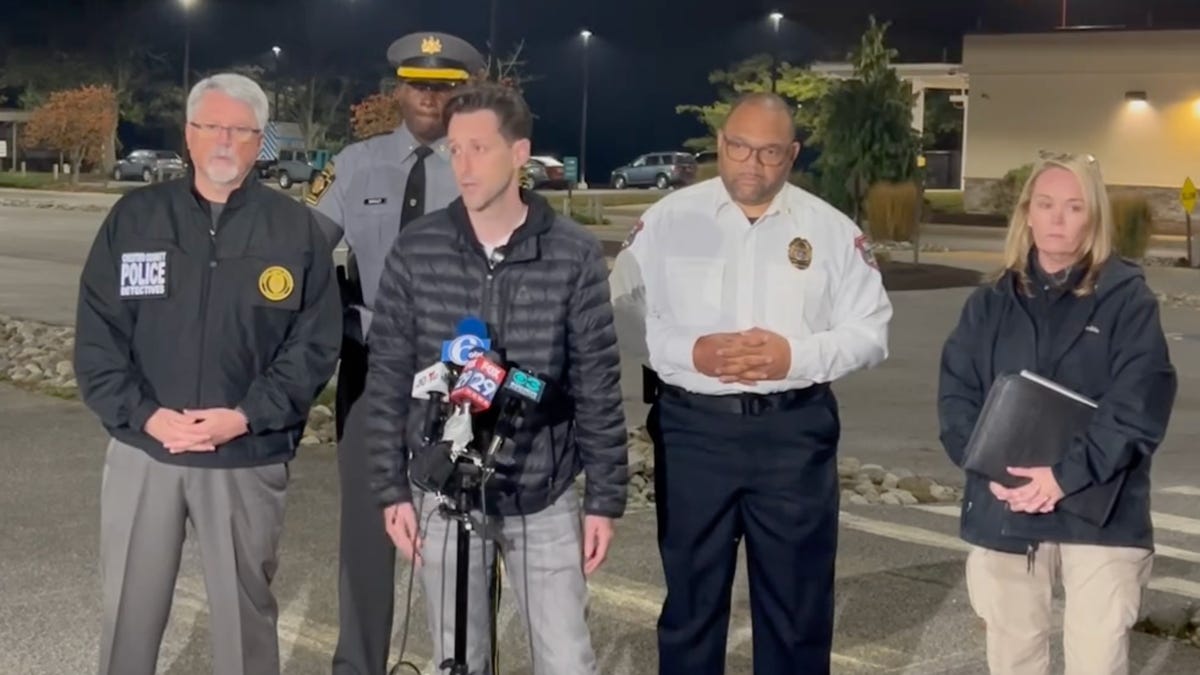
 News1 week ago
News1 week ago1 dead, 6 injured in shooting at Lincoln University homecoming festivities
-

 Culture1 week ago
Culture1 week agoVideo: Tyler Mitchell Breaks Down Three Photos From His New Book
-

 Austin, TX1 week ago
Austin, TX1 week agoDia De Los Muertos Austin: Parades, Altars & Events
-

 Seattle, WA3 days ago
Seattle, WA3 days agoESPN scoop adds another intriguing name to Seahawks chatter before NFL trade deadline
-

 Culture6 days ago
Culture6 days agoVideo: Dissecting Three Stephen King Adaptations

